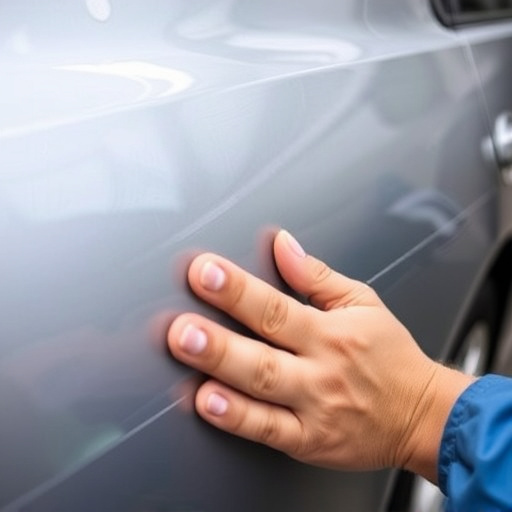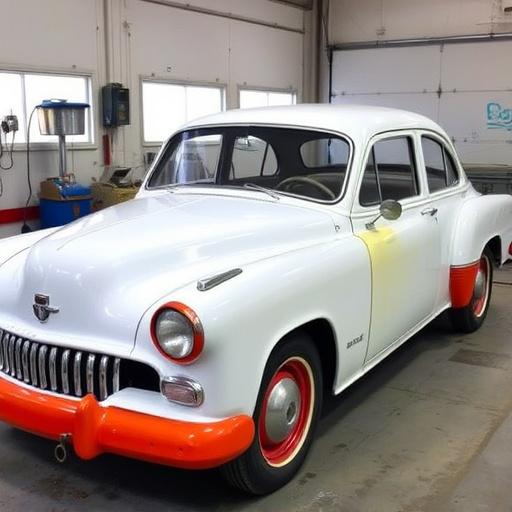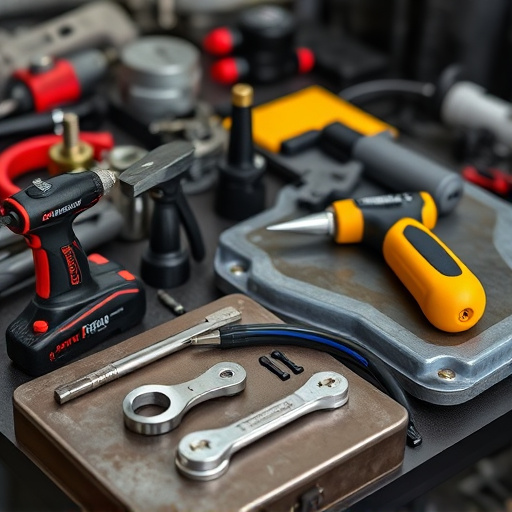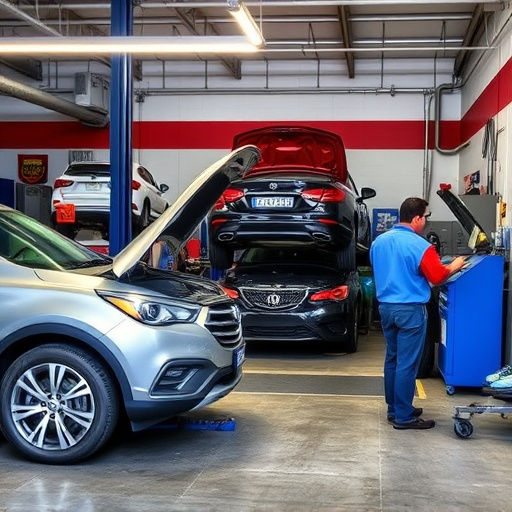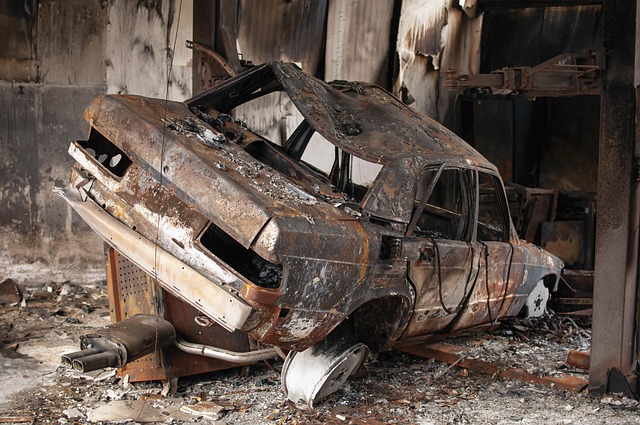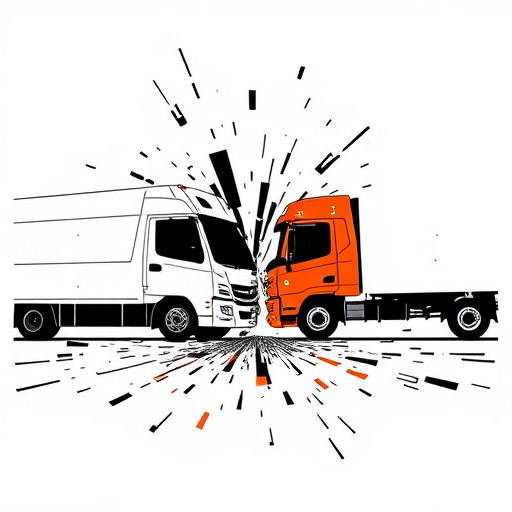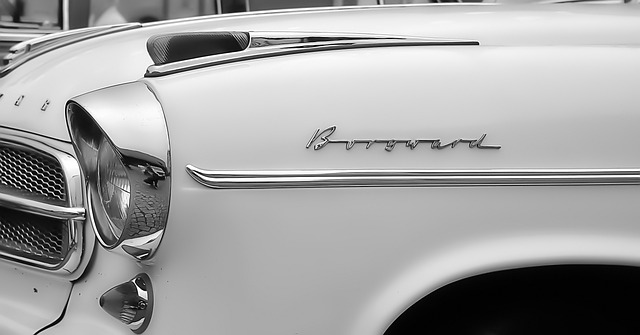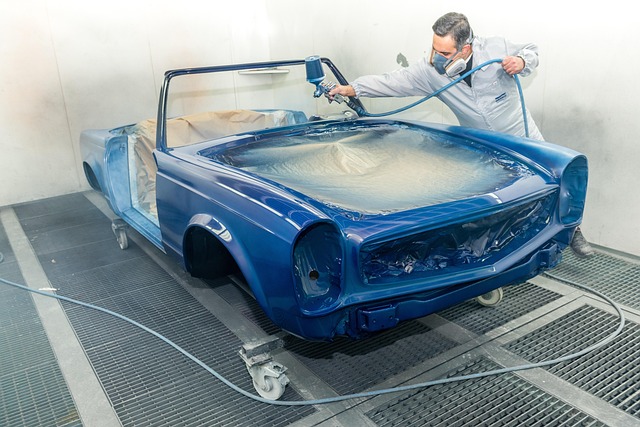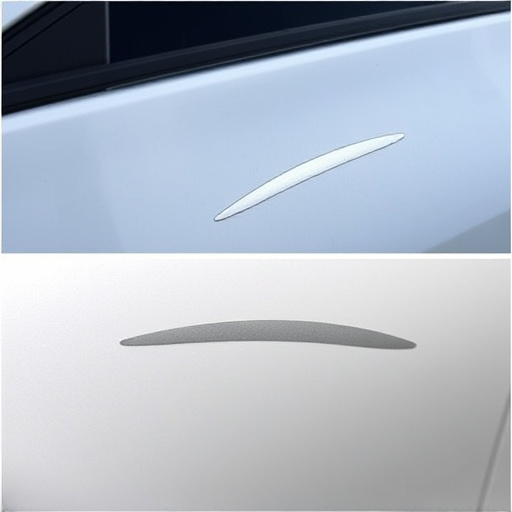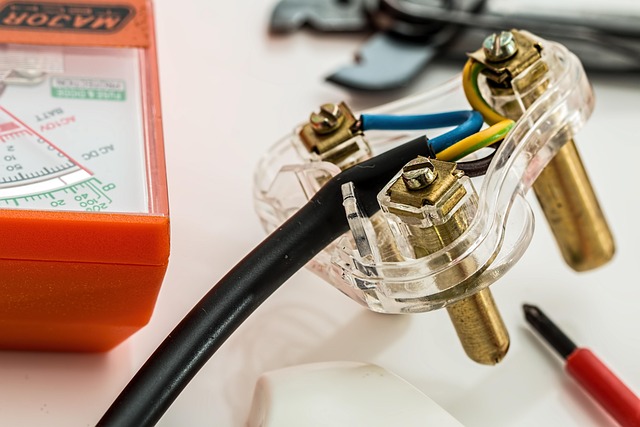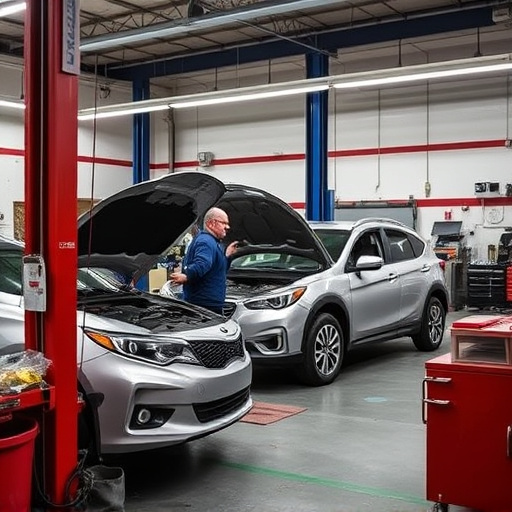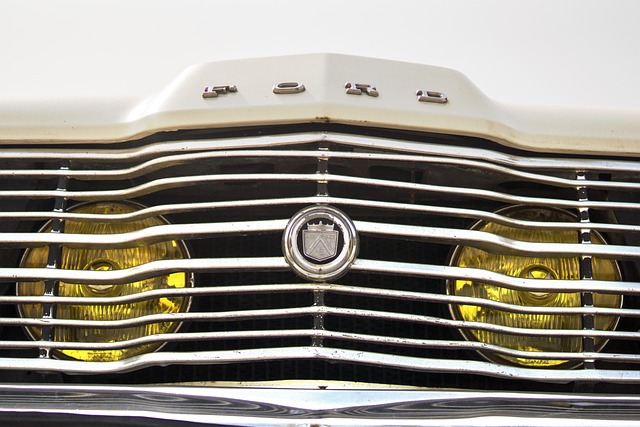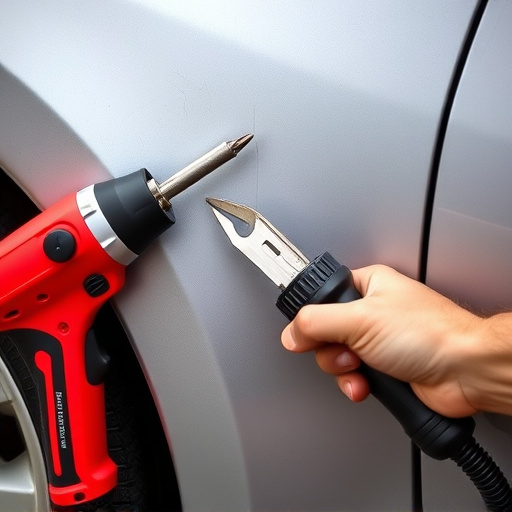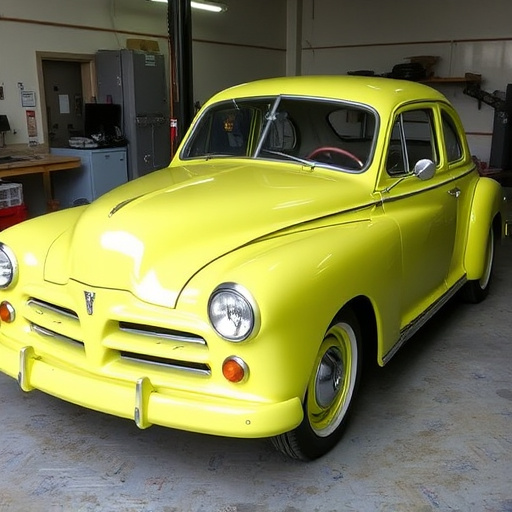UV curing systems revolutionize automotive repair and restoration by using ultraviolet light to speed up drying and hardening of coatings, adhesives, and sealants, reducing cure times compared to traditional methods. These systems enhance productivity, allowing collision centers to complete repairs promptly while maintaining high-quality standards. With superior strength and durability, UV curers offer faster repair times and longer-lasting results, saving time and money for shops and customers alike. However, safety is crucial; proper ventilation, protective gear, controlled exposure time, and distance are essential best practices for a safe working environment during auto dent repair and vehicle restoration with UV technologies.
“UV curing systems are transforming auto repairs with their advanced technology. This innovative process offers a swift and robust solution, revolutionizing traditional drying methods. In this article, we explore the mechanics of UV curing systems and their significant advantages in automotive repair. From accelerated drying times to enhanced structural integrity, these systems are a game-changer. Furthermore, we delve into safety protocols, ensuring professionals can harness the power of UV curing effectively while prioritizing worker and environmental well-being.”
- Understanding UV Curing Systems: The Technology Behind the Process
- Advantages of UV Curing in Auto Repairs: Faster Drying and Superior Strength
- Safety Measures and Best Practices for Using UV Curing Systems in Automotive Applications
Understanding UV Curing Systems: The Technology Behind the Process
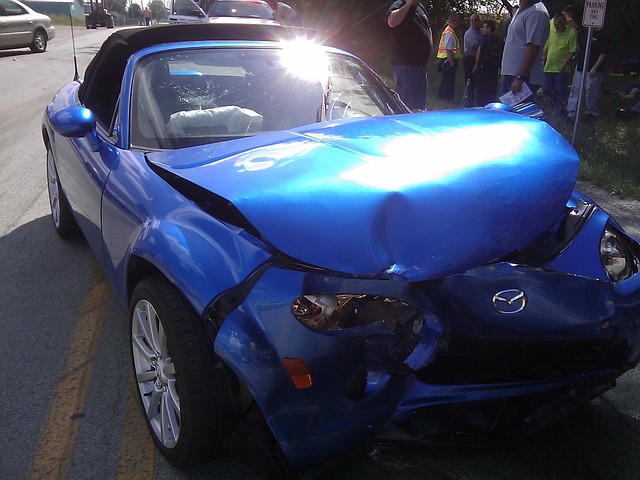
UV curing systems have emerged as a revolutionary technology in the automotive repair and restoration industry. This innovative process utilizes ultraviolet light to accelerate the drying and hardening of various coatings, adhesives, and sealants used in auto body restoration and painting. By emitting UV rays, these systems offer a fast and efficient alternative to traditional drying methods, significantly reducing cure times.
The technology behind UV curing involves the activation of specific resins and polymers present in the applied materials. Upon exposure to UV light, these compounds undergo a photochemical reaction, transforming them from a liquid or paste state to a solid, durable finish. This instant hardening property ensures that auto collision centers can promptly complete repairs, offering customers faster turnaround times without compromising on quality. Moreover, UV curing systems contribute to enhanced productivity in auto painting processes, making them a valuable asset for modern automotive service facilities.
Advantages of UV Curing in Auto Repairs: Faster Drying and Superior Strength

UV curing systems offer a multitude of benefits for auto repairs, with two key advantages standing out: faster drying times and superior strength. Unlike traditional painting methods that can take hours or even days to dry completely, UV curers use ultraviolet light to instantly harden resin and paint. This not only speeds up the repair process, reducing downtime for vehicle owners, but also ensures a more consistent finish.
Moreover, the cured coatings provided by UV systems exhibit exceptional strength and durability. The strong bond formed between layers of resin allows for better resistance against chipping, scratching, and other forms of damage commonly encountered in automotive body shops. This superior performance translates to longer-lasting vehicle repair jobs, saving both time and money for both the shop and its customers.
Safety Measures and Best Practices for Using UV Curing Systems in Automotive Applications
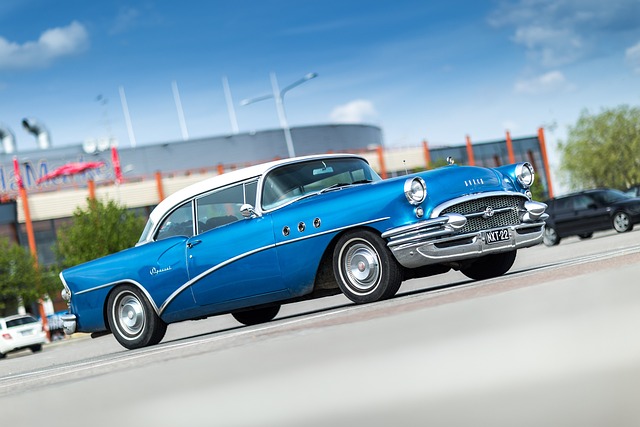
Using UV curing systems in an automotive body shop offers numerous benefits for auto dent repair and vehicle restoration processes, but safety measures are paramount. These advanced technologies significantly speed up drying times compared to traditional methods, reducing overall repair duration. However, proper precautions must be taken due to the system’s intense UV light emission.
When using UV curing systems, it’s crucial to ensure adequate ventilation in the work area to maintain air quality and prevent any potential health risks associated with exposure to UV radiation. Technicians should wear protective gear, including eye shields and gloves, to safeguard against direct contact with the UV light. Additionally, controlling the exposure time and maintaining proper distance from the curing system are essential best practices to guarantee a safe working environment during auto dent repair or vehicle restoration processes.
UV curing systems have emerged as a game-changer in auto repairs, offering significant advantages over traditional drying methods. Their ability to provide faster drying times and superior strength makes them an efficient and cost-effective solution for various automotive applications. By adopting this innovative technology, repair shops can enhance their productivity and ensure high-quality outcomes. However, it’s crucial to prioritize safety and follow best practices when using UV curing systems to mitigate potential risks. With the right procedures in place, these systems can revolutionize the auto repair industry, ensuring faster turnaround times without compromising on quality.
